History & Geography
CKHG Grades K–2
Core Knowledge is delighted to offer twenty-four engaging and highly informative History and Geography units for Grades K−2, available now for free download.
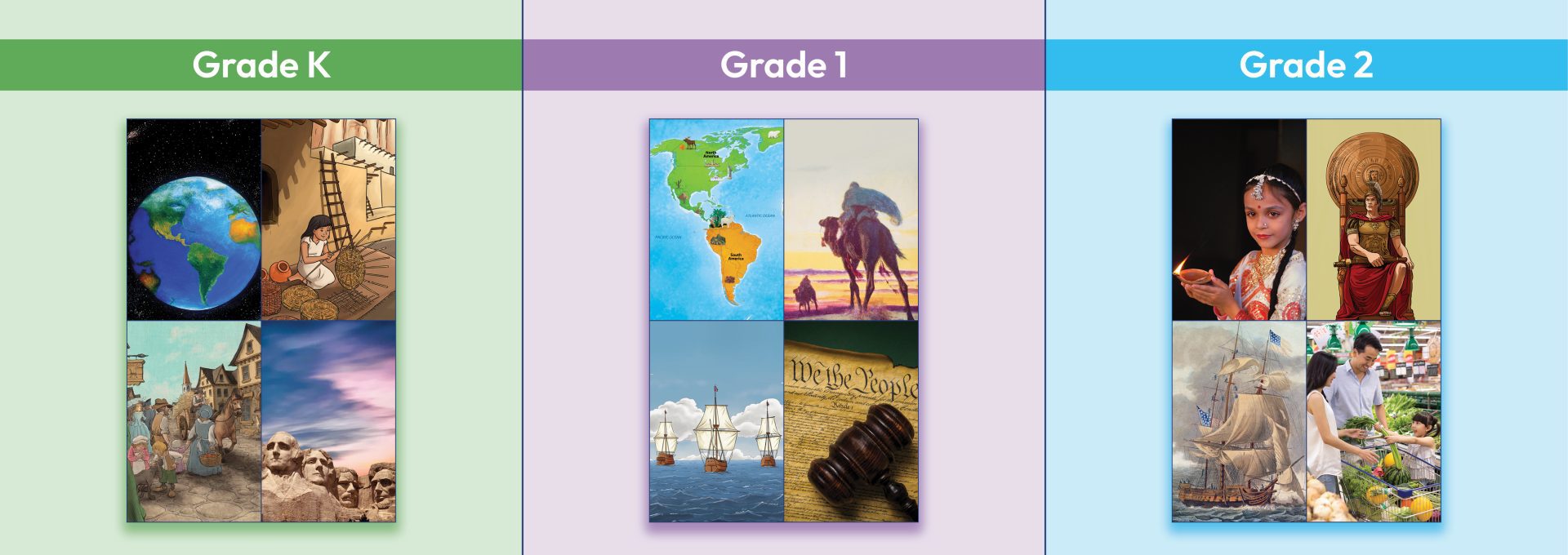
The Student Book features a larger format for little hands, colorful, illustrative pages, and informative, exciting text that teachers will read aloud.
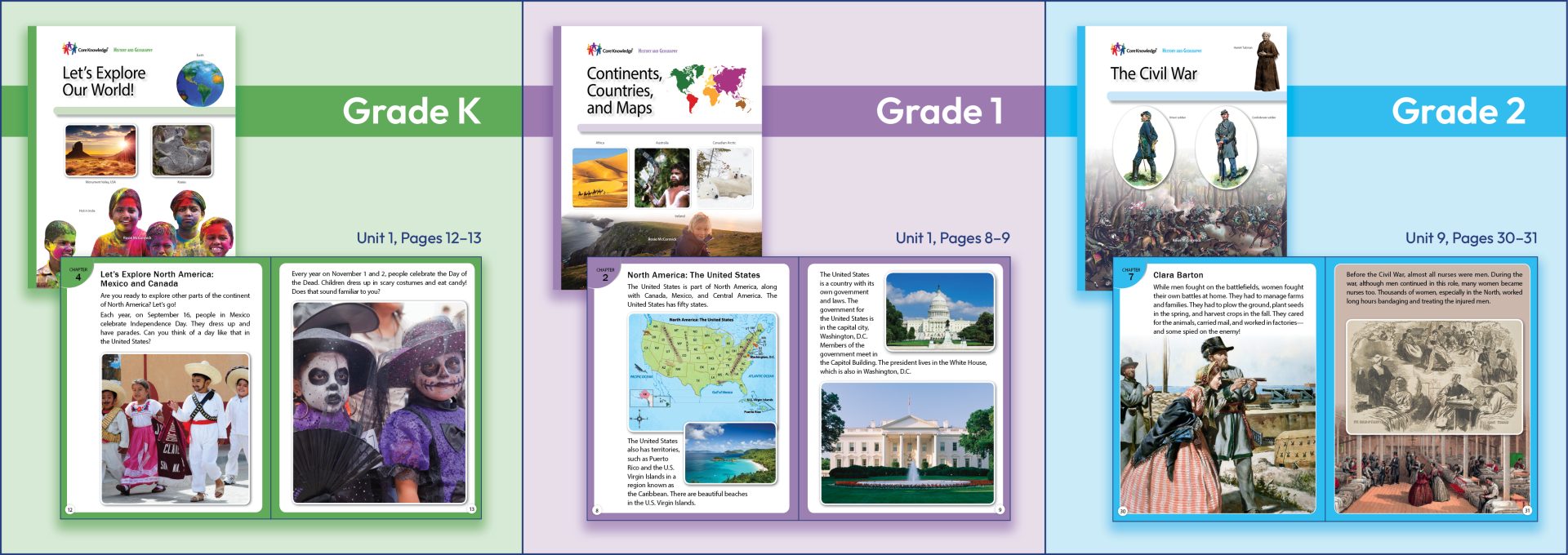
The Teacher Guide provides detailed lesson plans, activity page masters, additional activities, and assessments.
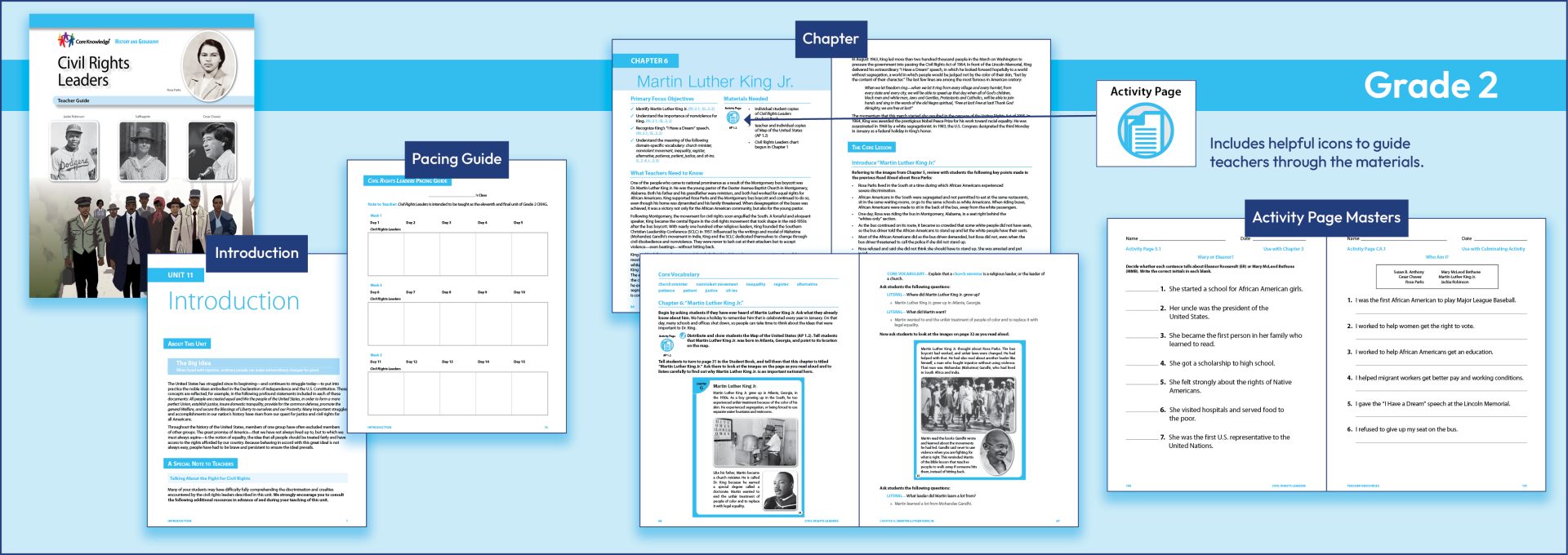
My Passport is a feature that allows young students to remember their “travels” through history, and provides passport “stamps” for them to attach to its pages.
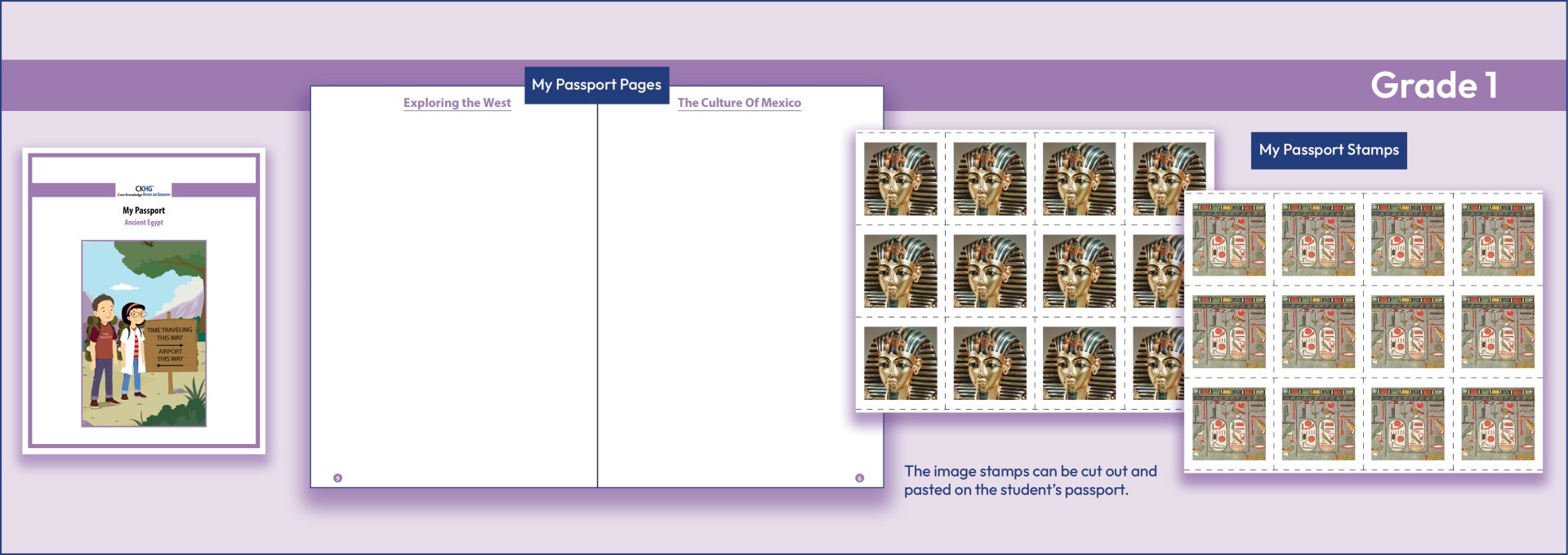
Each unit contains links to Online Resources, which include additional support materials and a range of activities.
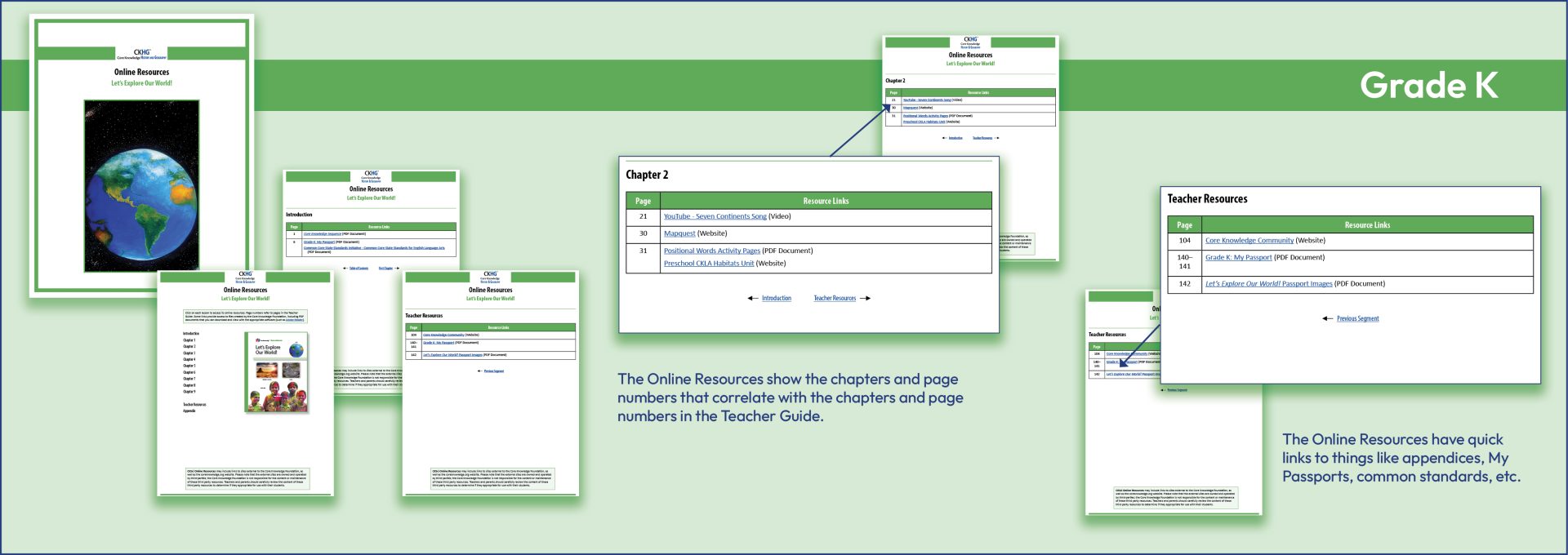
The Big Idea in Grade 1 Lessons in Civics is that everyone is part of at least one community. Students will explore the ideas of community, rules, and citizenship as an introduction to civic principles and participation.
The Big Idea in Grade 2 Lessons in Economics is that every day we use goods and services. Students will learn the basics of economics, including goods and services, consumers and producers, resources, choices, and trade.
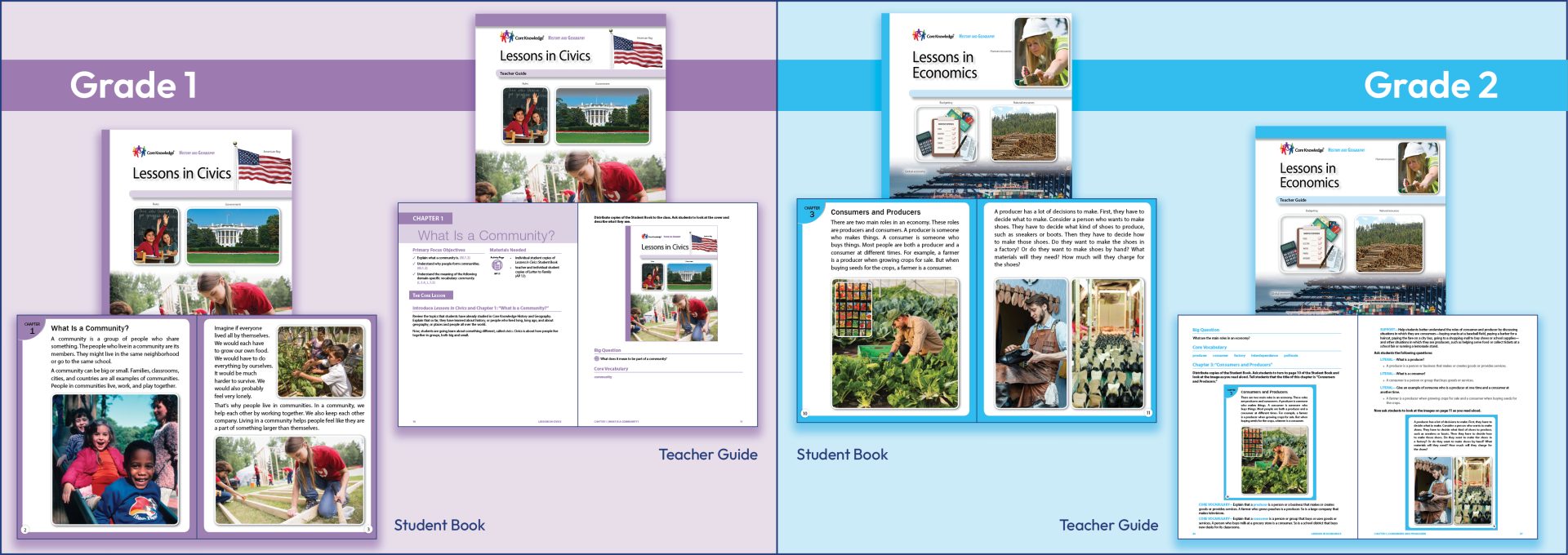
CKHG Grades 3–6
Core Knowledge is pleased to provide its popular CKHG series, Grades 3−6, for free download.
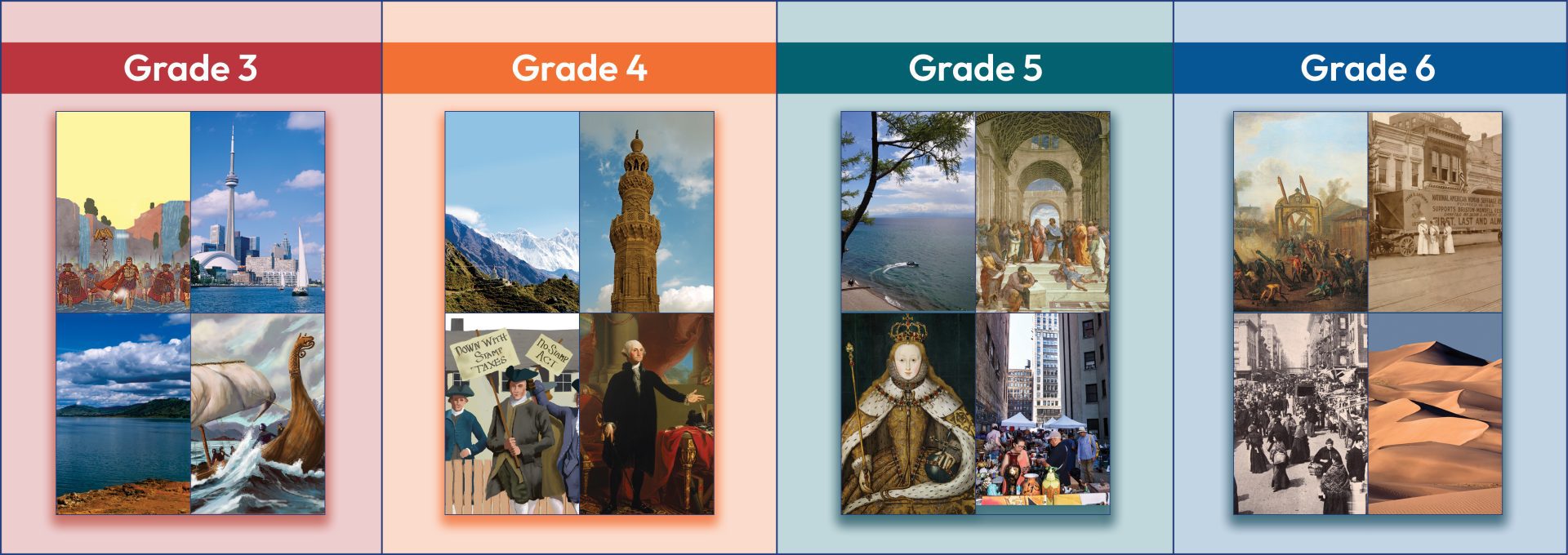
Student Readers feature colorful, illustrative pages, appealing maps, and informative, exciting text.
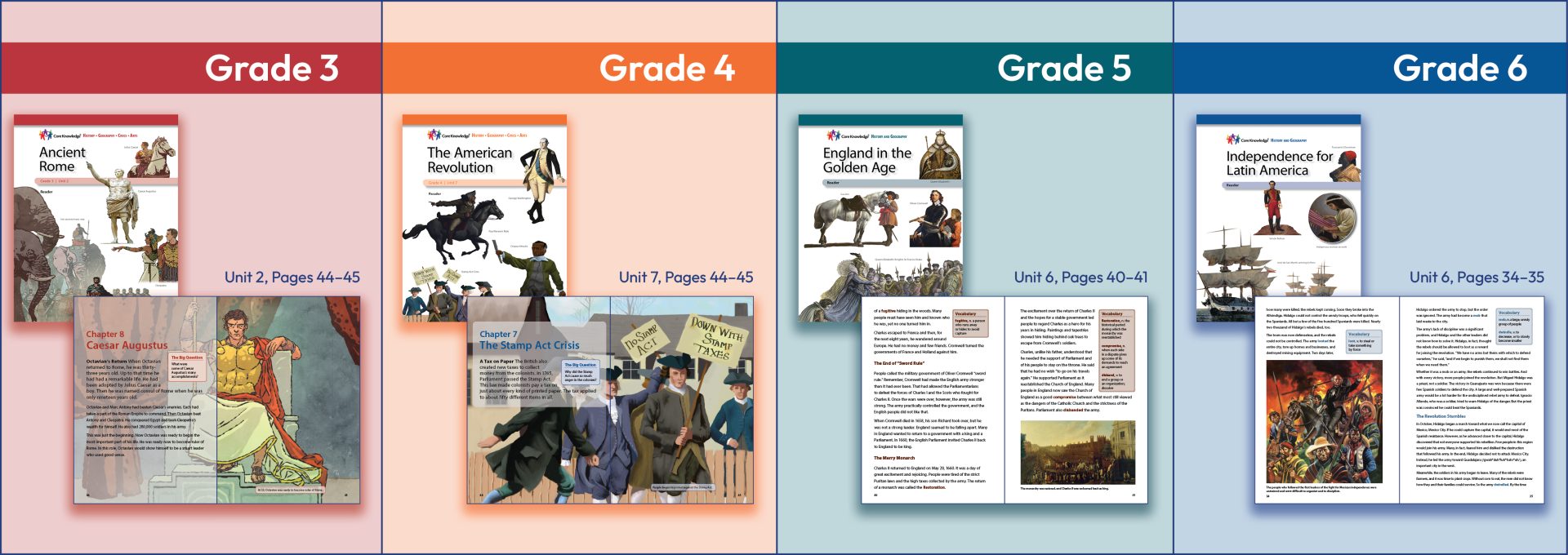
The Teacher Guides provide detailed lesson plans, activity page masters, additional activities, and assessments.
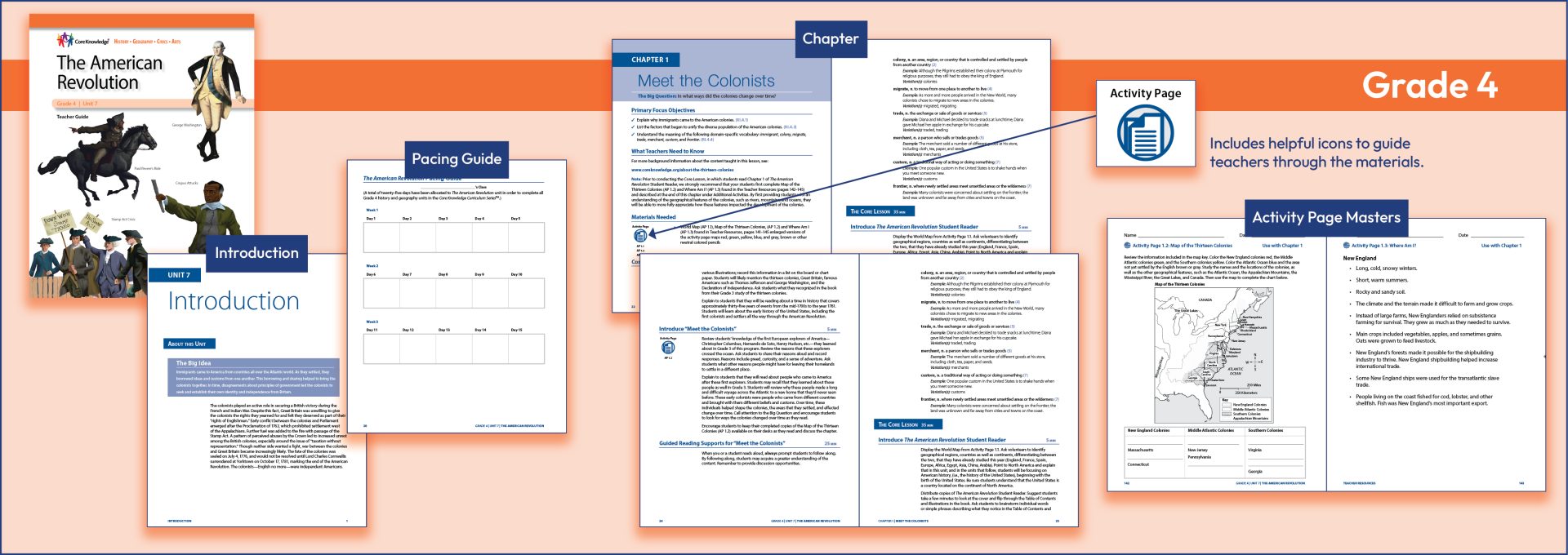
Timeline Cards serve as visual aids to reinforce big ideas, clarify the chronology and context of historical events, and prompt discussion
Question Cards depict significant themes and ideas related to civics and American government. In addition to an image, each card contains a chapter number and a driving question that outlines the focus of the chapter, discussion, or activity.
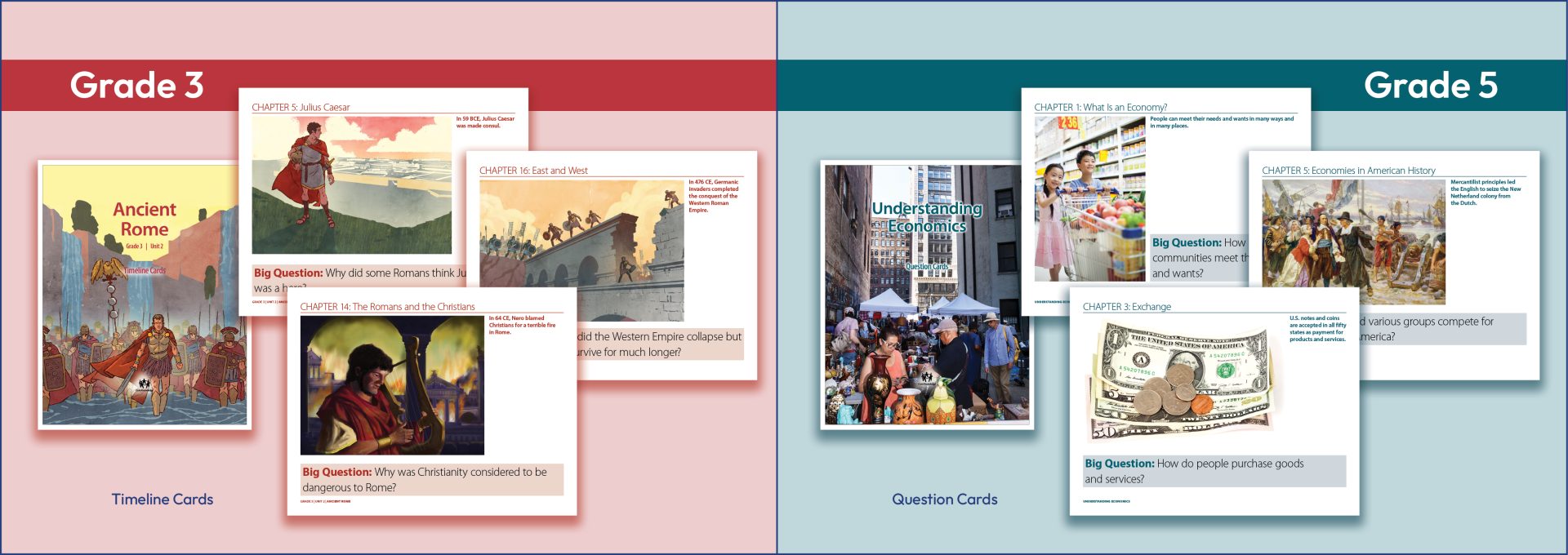
Online Resources support the lessons and activities within the teacher guides.
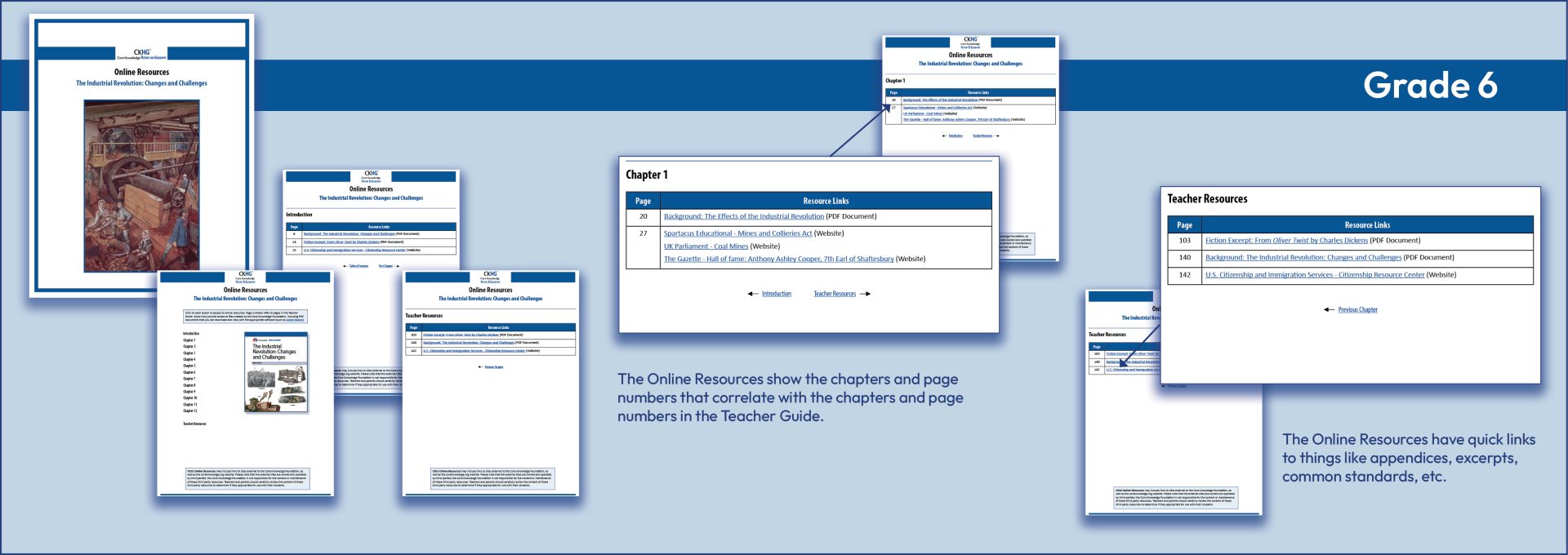
The Big Idea in Grade 4 Understanding Civics is that an understanding of civics and government is an essential part of being an informed and engaged member of society.
The Big Idea in Grade 5 Understanding Economics is that different societies answer economic questions in different ways.
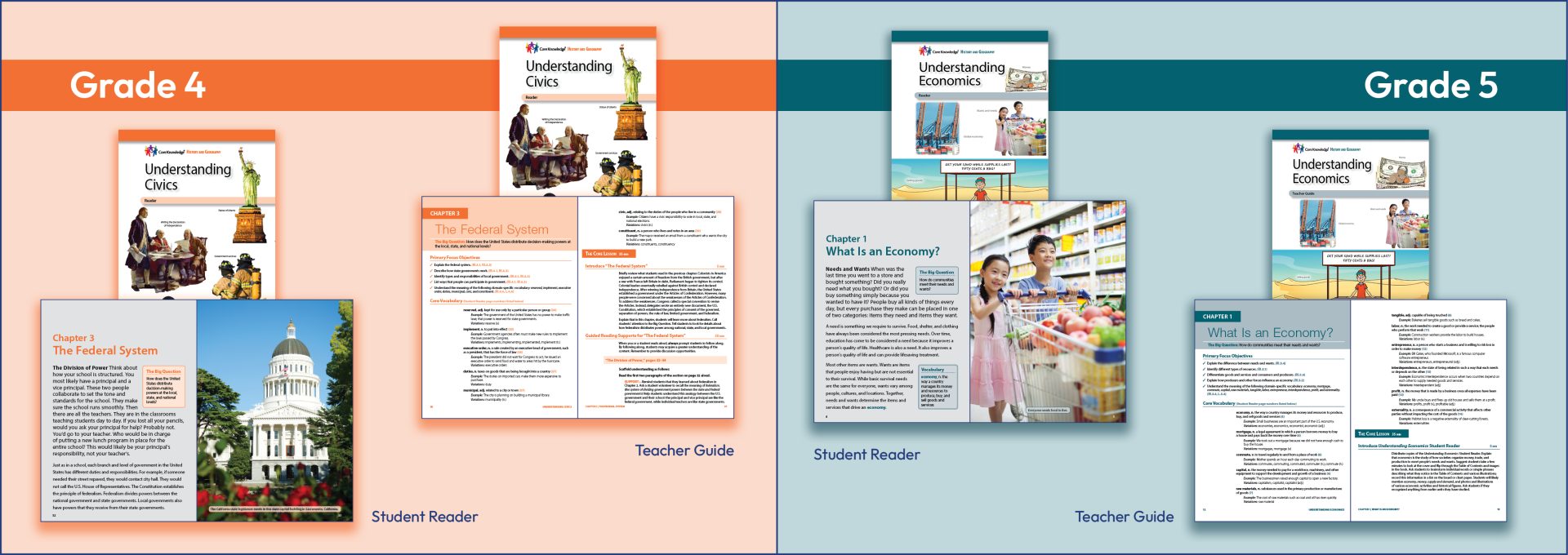
Grades 7–8
Core Knowledge is pleased to bring its popular CKHG curriculum to grades 7–8!
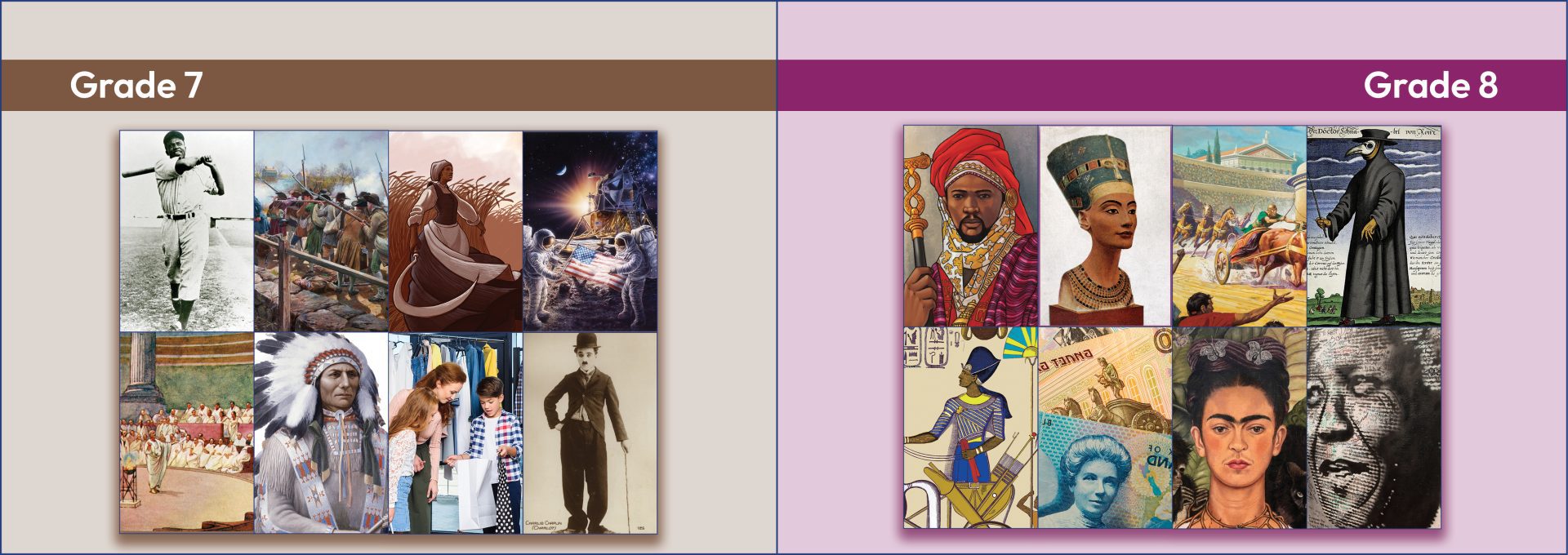
: Student Readers feature colorful, illustrative pages, appealing maps, and informative, exciting text.
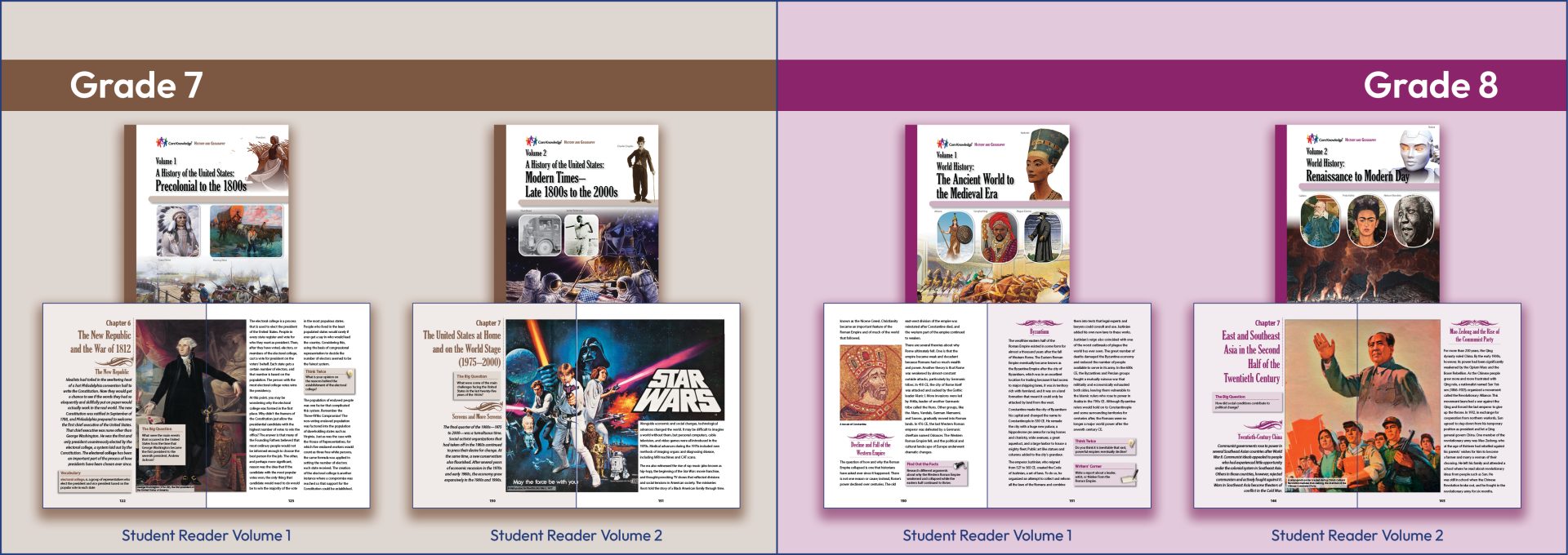
Teacher Guides provide detailed lesson plans, activity page masters, additional activities, and assessments.
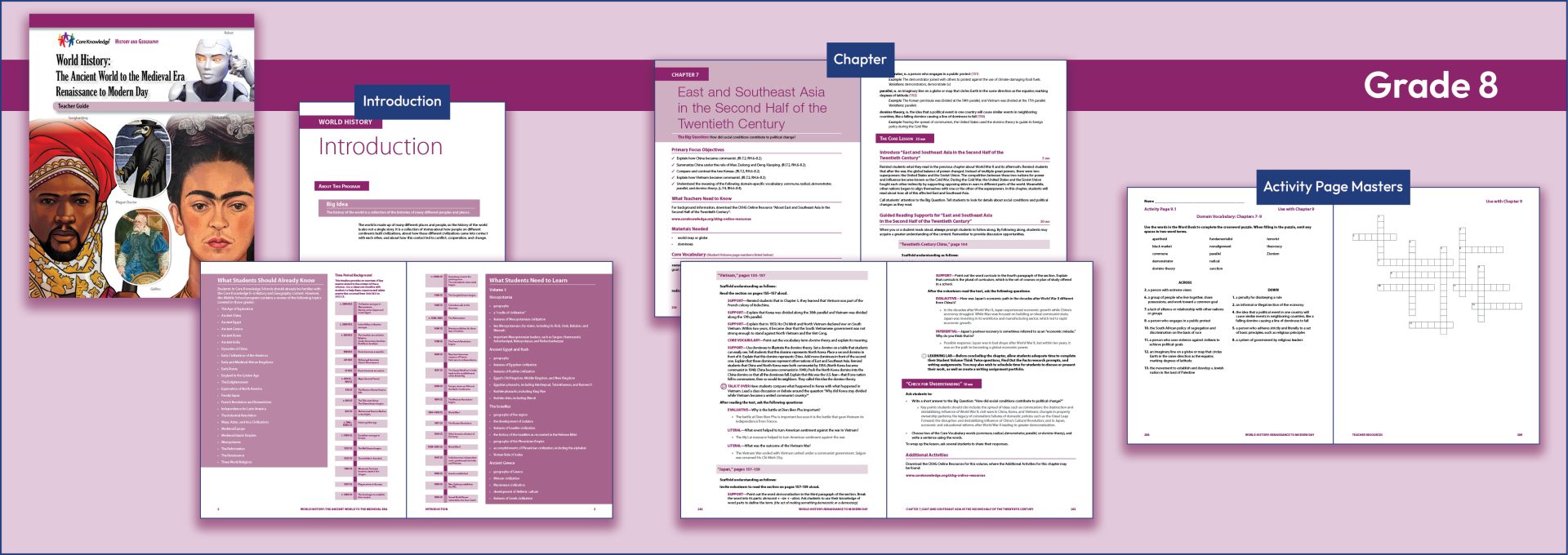
Online Resources support lessons and activities within the Teacher Guides.
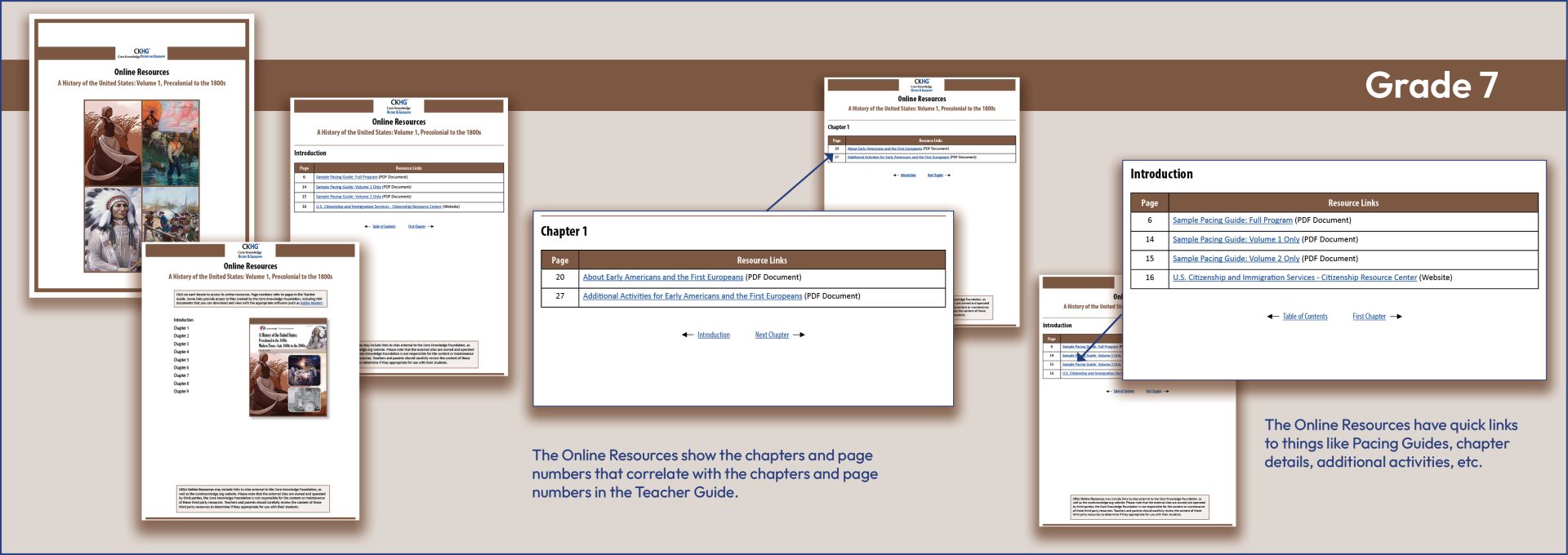
The Big Idea in Civics and Economics in U.S. History is: Civics and economics help shape our daily lives and helped shape U.S. history.
The Big Idea in Civics and Economics in World History is: Decisions about civics and economics help give societies their identities.
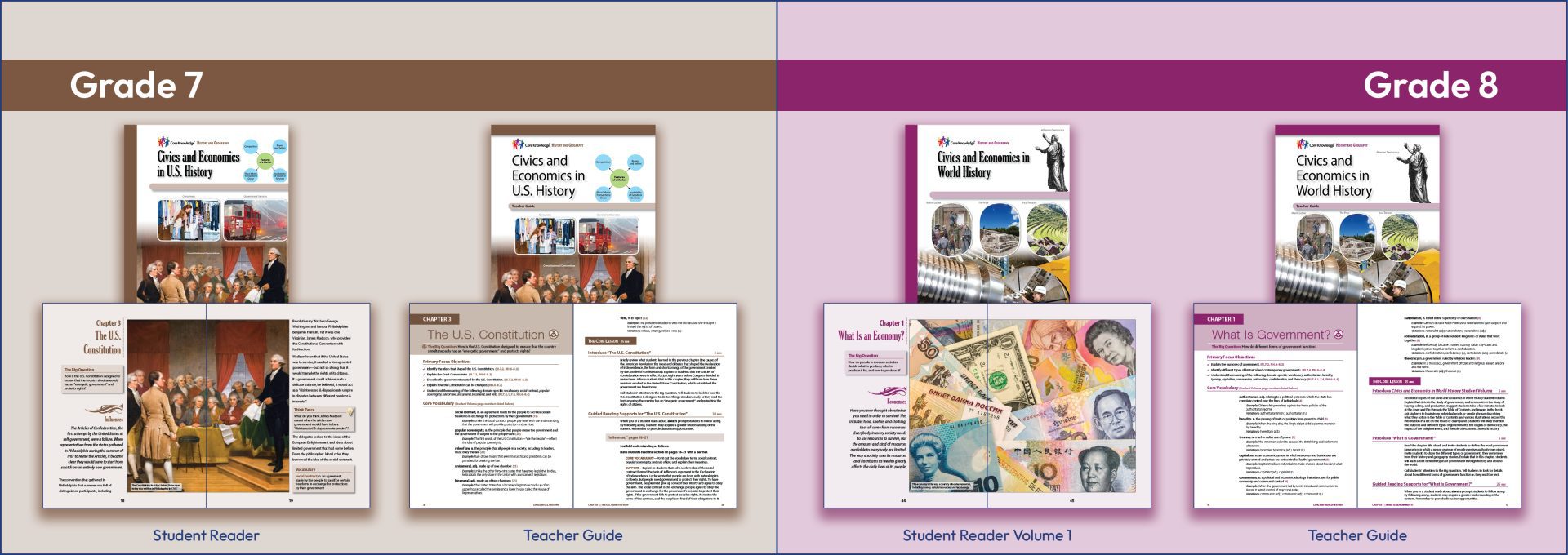
Implementation Options text
Civics and CKHG
How Do the Core Knowledge History and Geography Materials Address Civics?
A critical goal of the Core Knowledge History and GeographyTM (CKHG) curriculum materials is to ensure that students acquire the foundational knowledge needed to become literate citizens who can contribute to a democratic society.
The Pathway to Citizenship
To that end, for all CKHG American History titles, every Teacher Guide includes a feature called The Pathway to Citizenship. An American flag icon denotes specific topics, questions, and activities that focus on the rights and duties of citizenship, including key historical events, ideas, documents, laws, and the structure of American government.
In choosing to designate specific content as part of The Pathway to Citizenship, we have been guided by a test developed by the U.S. Citizenship and Immigration Services (USCIS). Immigrants seeking to become naturalized American citizens are required to answer correctly a selection of questions from the test. During an interview, candidates for citizenship are asked up to 10 questions from the 100 items in the USCIS Civics Test.
Additional Resources
The Core Knowledge Foundation has partnered with the Civics Renewal Network, “a consortium of nonpartisan, nonprofit organizations committed to strengthening civic life in the U.S. by increasing the quality of civics education in our nation’s schools and by improving accessibility to high-quality, no-cost learning materials. On the Civics Renewal Network site, teachers can find the best resources of these organizations, searchable by subject, grade, resource type, standards, and teaching strategy.”
USCIS Resources
Teachers may also be interested in additional resources available to prepare for the USCIS Civics Test, such as flash cards and study materials in Spanish and Chinese, as well as English.
Of particular interest:
- An introductory video from U.S. Citizenship and Immigration Services, A Promise of Freedom: An Introduction US History and Civics for Immigrants
- The online civics practice test presented as a multiple choice test
- A 16-minute video on the US Naturalization interview, with simulations
- An interactive site for preparing for the oath of citizenship.
Check Your Students’ Civics Knowledge
Students who master the goals of The Pathway to Citizenship in the CKHG American History resources for grades 3-5 will have a strong sense of the historical context of ideas, ideals, and arguments central to the shaping of American government and civic institutions. They will also have the knowledge assessed by the USCIS Civics Test.
At the end of Grade 5, we encourage teachers using CKHG to challenge students to demonstrate that they have acquired the knowledge fundamental to becoming informed American citizens.
From the 100 items in the USCIS Civics Test, the Core Knowledge Foundation has prepared four quizzes with ten questions each. Click the tabs to open each quiz. (You can download each quiz and answer key.)
Download Civics Quiz A with Answer Key
The following questions are from the 100 items in the civics test developed by the U.S. Citizenship and Immigration Services (USCIS). Immigrants seeking to become naturalized American citizens are required to answer correctly a selection of questions from the test.
Answer the following questions to check your civics knowledge.
- What document is the supreme law of the land?
- Who is in charge of the executive branch?
- What are the two parts of the U.S. Congress?
- How many U.S. Senators are there?
- What are two rights of everyone living in the United States?
- Who lived in America before the Europeans arrived?
- Name the U.S. war between the North and the South.
- What movement tried to end racial discrimination?
- What ocean is on the West Coast of the United States?
- What is the name of the national anthem?
Download Civics Quiz B with Answer Key
The following questions are from the 100 items in the civics test developed by the U.S. Citizenship and Immigration Services (USCIS). Immigrants seeking to become naturalized American citizens are required to answer correctly a selection of questions from the test.
Answer the following questions to check your civics knowledge.
- What is an amendment?
- Name one branch or part of the government.
- Who makes federal laws?
- We elect a U.S. Senator for how many years?
- What is one responsibility that is only for United States citizens?
- What group of people was taken to America and sold as slaves?
- Name one war fought by the United States in the 1800s.
- Who did the United States fight in World War II?
- Name one U.S. territory.
- Why does the flag have 50 stars?
Download Civics Quiz C with Answer Key
The following questions are from the 100 items in the civics test developed by the U.S. Citizenship and Immigration Services (USCIS). Immigrants seeking to become naturalized American citizens are required to answer correctly a selection of questions from the test.
Answer the following questions to check your civics knowledge.
- What do we call the first ten amendments to the Constitution?
- Who does a U.S. Senator represent?
- How many justices are on the Supreme Court?
- Why do some states have more Representatives than other states?
- There are four amendments to the Constitution about who can vote. Describe one of them.
- There were 13 original states. Name three.
- What did Susan B. Anthony do?
- What major event happened on September 11, 2001, in the United States?
- Name one state that borders Canada.
- When do we celebrate Independence Day?
Download Civics Quiz D with Answer Key
The following questions are from the 100 items in the civics test developed by the U.S. Citizenship and Immigration Services (USCIS). Immigrants seeking to become naturalized American citizens are required to answer correctly a selection of questions from the test.
Answer the following questions to check your civics knowledge.
- What did the Declaration of Independence do?
- What stops one branch of government from becoming too powerful?
- Who signs bills to become laws?
- What are the two major political parties in the United States?
- What are two ways that Americans can participate in their democracy?
- Who wrote the Declaration of Independence?
- What did the Emancipation Proclamation do?
- Name one war fought by the United States in the 1900s.
- Name one of the two longest rivers in the United States.
- Name two national U.S. holidays.
CKHG Online Resources
The Teacher Guides for Core Knowledge History and Geography titles reference various online resources that support the teaching materials.
NOTE: If you downloaded a CKHG Teacher Guide prior to March 1, 2017, please download again to receive files with updated links to the CKHG Online Resources.
- Unit 1: Continents, Countries, and Maps
- Unit 2: Mesopotamia
- Unit 3: Ancient Egypt
- Unit 4: Three World Religions
- Unit 5: Early Civilizations of the Americas
- Unit 6: The Culture of Mexico
- Unit 7: Early Explorers and Settlers
- Unit 8: From Colonies to Independence
- Unit 9: Exploring the West
- Unit 10: Lessons in Civics
- Unit 1: Ancient India
- Unit 2: Ancient China
- Unit 3: The Culture of Japan
- Unit 4: Ancient Greece
- Unit 5: Geography of the Americas
- Unit 6: Making the Constitution
- Unit 7: The War of 1812
- Unit 8: Americans Move West
- Unit 9: The Civil War
- Unit 10: Immigration and Citizenship
- Unit 11: Civil Rights Leaders
- Unit 12: Lessons in Economics
- Unit 1: Using Maps
- Unit 2: World Mountains
- Unit 3: Medieval Europe
- Unit 4: Medieval Islamic Empires
- Unit 5: Early and Medieval African Kingdoms
- Unit 6: Dynasties of China
- Unit 7: The American Revolution
- Unit 8: The United States Constitution
- Unit 9: Early Presidents
- Unit 10: American Reformers
- Unit 11: Understanding Civics
- Unit 1: World Lakes
- Unit 2: Maya, Aztec, and Inca Civilizations
- Unit 3: The Age of Exploration
- Unit 4: The Renaissance
- Unit 5: The Reformation
- Unit 6: England and the Golden Age
- Unit 7: Early Russia
- Unit 8: Feudal Japan
- Unit 9: The Geography of the United States
- Unit 10: Westward Expansion Before the Civil War
- Unit 11: The Civil War
- Unit 12: Westward Expansion After the Civil War
- Unit 13: Native Americans: Cultures and Conflicts
- Unit 14: Understanding Economics
- Unit 1: World Deserts
- Unit 2: Ancient Greece and Rome
- Unit 3: The Enlightenment
- Unit 4: The French Revolution and Romanticism
- Unit 5: The Industrial Revolution: Changes and Challenges
- Unit 6: Independence of Latin America
- Unit 7: Immigration
- Unit 8: Industrialization and Urbanization in America
- Unit 9: Reform in Industrial America
Related Curriculum
CKHG follows our approach to knowledge-based schooling, outlined in the Core Knowledge Sequence. It allows students to build and deepen their knowledge grade by grade and to make cross-curricular connections across subjects.
CKHG and Civics
The history and geography curriculum materials aim to prepare students to actively participate in a democratic society. Within all CKHG American History titles, every Teacher Guide includes a feature called The Pathway to Citizenship.
CKHG for Social Studies
Used in their recommended sequence, CKHG materials can form the basis of an engaging Social Studies program that builds historical and geographical knowledge and skills grade by grade.
CKHG and Language Arts
You can also use CKHG to integrate content-rich nonfiction into your Reading or Language Arts lessons. CKHG objectives are correlated to the Common Core English Language Arts standards, which call for increased reading of nonfiction informational texts. With CKHG, you can take an interdisciplinary approach to reading that provides rich, meaningful, and sustained engagement with informational texts organized in a coherent sequence.
Biography Series
Voices in History is a Core Knowledge Biography Series that encourages young readers to learn about real Superheroes in history. As a result of acts of extraordinary bravery, ingenuity, strength, and determination, these people made a difference, and changed the world. Perhaps their remarkable stories will inspire young readers to become the Superheroes of the future.
Terms of Use
The Core Knowledge History and Geography curriculum materials made available for download are freely available for anyone to use, adapt, and share (with attribution). No one is permitted to extract any images included in our PDF materials for use in any other way; to do so would be a violation of the agreements under which the images were licensed. No one is permitted to sell either the original program, an adaptation of it, or lesson plans that reproduce any part of it. For more information, see the Guidelines to Core Knowledge and the Creative Commons License.
